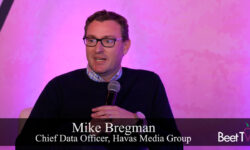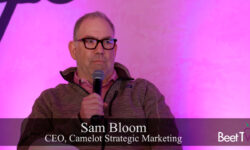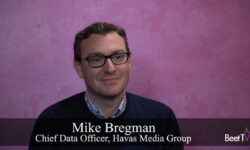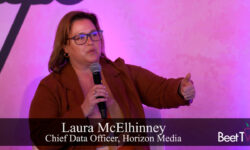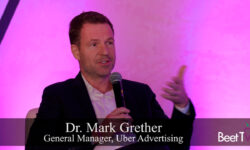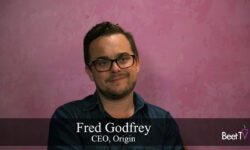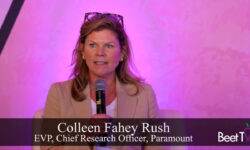SAN JUAN, Puerto Rico — Amongst the copious terminology which is so commonplace in digital advertising, a new one joined the ranks over the last year.
“Supply-side targeting” is reckoned to encompass the different ways in which ad-tech can enable targeting capabilities for publishers and around publishers’ own content or inventory, rather than audience-based targeting.
In this video interview with Beet.TV, Andy Hammond, Senior Director, Advanced TV, OpenX, explains why the trend is gathering steam.
Closer to home
“Supply-side targeting, I think we’re going to hear a lot more of in the programmatic space and in the advertising industry,” Hammond says.
“It’s the whole idea behind getting the advertiser’s message closer up against the publisher’s supply with less hops to get there.”
Hammond says OpenX’s audience identity graph tools “sit next to the publication, whether that be connected TV or any online video”.
“You’re able to apply data to that, with less hops than you do in the traditional way of buying programmatic.”
Attain Partners with @OpenX to Enable Supply Side Targeting For Advertisershttps://t.co/3PBYOJoEZv #martech #marketing #Technology #Attain #OpenX
— MarTech Series (@MarTechSeries) December 13, 2022
Identity partners
Supply-side targeting tools are growing in focus because the demise of traditional digital identifiers like cookies and device IDs is causing audience-based targeting to decline.
For publishers, that is, perhaps, welcome news. Many have long wanted to reclaim their primacy in an ad sales chain from which they had sometimes become removed.
Supply-side targeting methods include ID-based targeting and contextual targeting.
OpenX has been building its identity graph for five years, based on partnerships with a dozen user data providers, including Merkel’s M-1. The company recently also added Horizon Media’s Blu.ID to that list.
OpenX says this “goes above and beyond supply-path optimization”, bringing “same-day audience delivery and easy deal setup to get deals live faster”.
Hammond says: “That’s going to allow those agency teams to go straight in and build a (audience) segment within a couple of hours, to then use that for targeting against the supply that we have.”
Race to zero
Hammond’s OpenX recently said environmental consultancy RSK Group has validated its status as a net-zero carbon company, meeting criteria of the Science-Based Targets initiative (SBTi).
The company says it reduced its scope 1 and 2 emissions by 98.6% between 2018 and 2021, and emissions under scopes 1, 2 and 3 combined by 96.3% over the same period, verified by SBTi as meeting its long-term reduction target.
Many in the industry are coming to understand the contribution programmatic, which can be processor-intensive, makes to carbon release.
“Apparently, the digital advertising industry is on a par with the airline industry in terms of how much energy it uses,” Hammond says.
A big driver of OpenX’s reduction was moving its servers to Google Cloud, which Hammond says “runs only on renewable sources“.
“I don’t think we quite realized then how we were going be able to get to be net zero quite so quickly,” he says.
How is your business tackling sustainability? Checkout The Drum's recent report on #sustainability in advertising and how companies like OpenX are driving toward sustainable practices and global standards: https://t.co/y7yvECr9vD
#greenbusiness #marketing #carbonneutral
— OpenX (@OpenX) November 21, 2022
Open up
OpenX is trying to carve out a place for itself as the ad exchange for the open web.
Its platform uses real-time bidding technology to facilitate the buying and selling of ad space in real-time auctions.
OpenX serves both publishers and advertisers, offering tools for publishers to monetize their digital content through advertising, and for advertisers to reach their target audiences through programmatic advertising.
OpenX is also now amongst those offering identity services, allowing for targeting of individuals.
We've heard buyers loud and clear. Our #tech provides differentiated value, control over programmatic spend, and quality placements to focused audiences. To get there, we're listening to buyers, capitalizing on #data, and building bespoke solutions. https://t.co/etxaCCYOdk pic.twitter.com/pOTf72GjBQ
— OpenX (@OpenX) November 2, 2022
You’re watching coverage of Beet Retreat San Juan 2023, presented by LiveRamp, Madhive, Magnite, Paramount, T-Mobile Advertising Solutions and VideoAmp. For more videos from the Beet Retreat, please visit this page.










